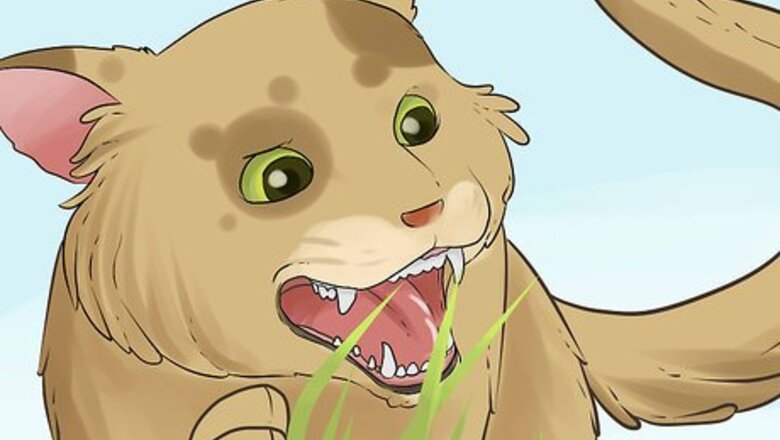
views
Determining Whether Your Cat is a ‘Happy’ or ‘Poor’ Vomiter
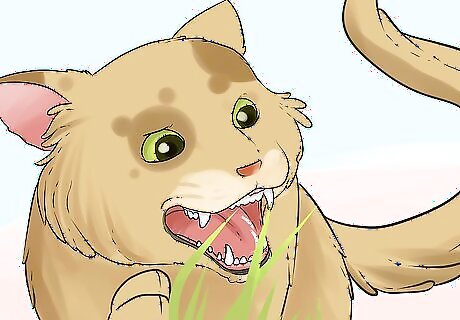
Be aware that if your cat eats grass a lot, she may be a ‘happy’ vomiter. A key sign of a happy vomiter is a cat that is otherwise well but has a tendency to eat grass and make herself sick. This is a predictable chain of events that you can generally observe on more than one occasion. Some cats make themselves sick once every two or three days, while others only make themselves sick once a week. Once they have induced vomiting they are content to wander off and perhaps even look for a snack. Other habits that may go along with eating grass include: Eating normally, keeping her food down at mealtime, maintaining weight, being active, and having a glossy coat.
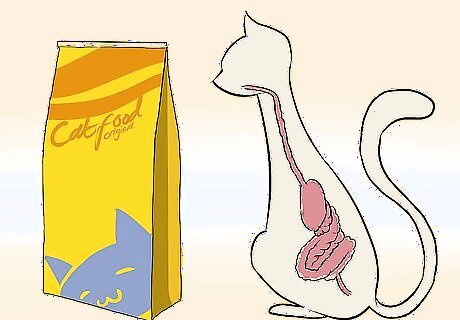
Understand that commercial cat food does not necessarily go with a cat’s normal digestion process. Wild cats will eat all of their prey—including bones, fur, and stomach contents. When they do this, they digest what they can, and then vomit up the indigestible parts. Commercial cat foods lack the stimulus that causes cats to vomit, so some cats may make themselves vomit by eating grass. If your cat is a "happy" vomiter and seems otherwise perfectly well, mention this habit at the next veterinary checkup so that your vet can confirm there is no problem.
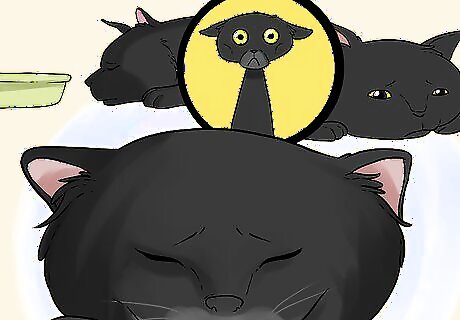
Recognize signs of a ‘poor’ vomiter. These cats do need a medical workup to make a diagnosis. A "poor" or “poorly” vomiter is one who is losing weight, has difficulty keeping food down, has lost her appetite, has a dull starry coat, is drinking excessively, or becomes lethargic. Another reason to get your cat checked is if the vomiting becomes more frequent than it used to, for example, if it goes from once a week to daily. If in doubt and your cat vomits regularly, it is always safest to get her checked by a veterinarian.
Getting a Physical Exam for Your Cat
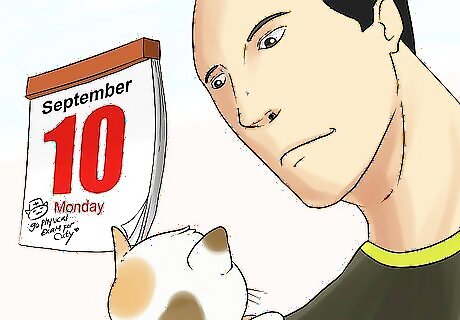
Schedule a physical exam for your cat. During a physical exam, the veterinarian will examine the cat to look for signs of ill health that could cause vomiting, and also feel the abdomen for masses or blockages. The following steps discuss the various aspects of a physical exam.
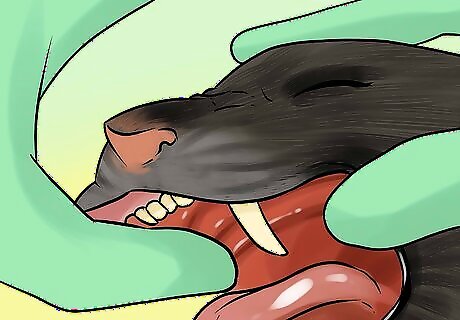
Know that your vet will check your cat’s mucous membranes. Your vet will lift your cat’s lip to look at the color of the gums. These should be pink, much like our own gums. Pallor (very pale pink or even white) gums indicate anemia, and a yellow stain suggests jaundice. These give the clinician clues as to where to look to identify the problem.
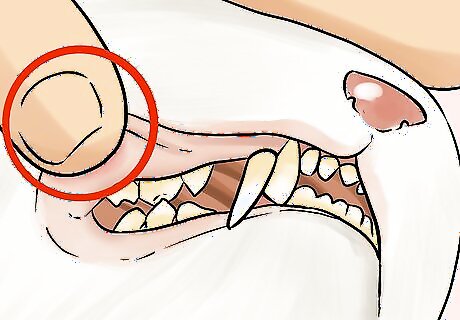
Look at the capillary refill time. A useful way to assess if the cat's circulation is coping, or if the cat is in a state of shock because of fluid loss, is the capillary refill time. This is the amount of time it takes for the gum to become pink again after the blood is pressed out of it. A normal capillary refill time is under 2two seconds, and usually, the refill is too brisk to count. A refill of more than two seconds is delayed. To measure the capillary refill time lift the lip and press a fingertip firmly to the gum, such that the gum goes pale or white. Release the finger and watch closely to see how many seconds it takes for the gum to become pink again.

Check hydration status. Lift the scruff away from the shoulders and then let it go. The skin should return to its normal position instantaneously. Dehydration decreases the skin's elasticity which means that it returns slowly when released. Severe dehydration results in "tenting" which is when the skin remains in a peak, rather than sliding back down. In the case of a vomiting cat, this may indicate that the cat is losing more fluid than she is taking in. This finding indicates a cat in need of urgent replacement fluid, such as being put on an intravenous drip. Intravenous fluids are given via a catheter which is placed in the vein in the cat's front leg. A giving set and bag of saline are attached to the catheter and the fluids drip directly into the bloodstream. Typically it takes 24 to 48 hours to slowly correct an underlying fluid deficit, during which time the cat will need to be hospitalized.
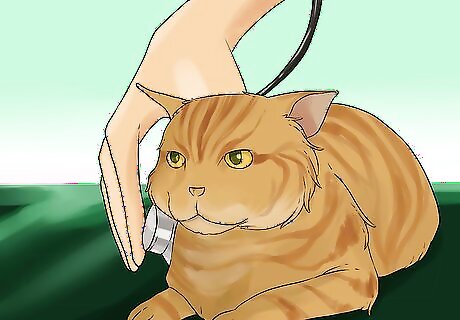
Know that your cat’s heart rate will be checked. Although this sounds like a strange thing to do when investigating vomiting, there is an underlying connection. Conditions such as hyperthyroidism (an overactive thyroid gland) can cause vomiting and is also associated with a racing heart. A resting heart rate of 180 beats per minute is abnormal, and the vet will feel the cat's throat area to see if an obviously enlarged thyroid is palpable.
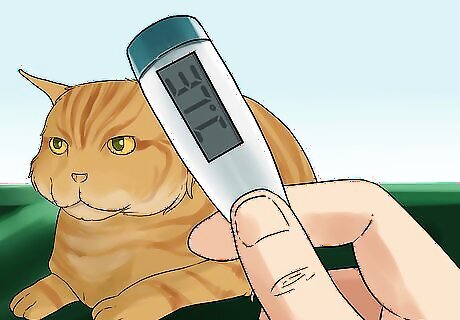
Understand that the cat’s temperature will be tested. A cat's temperature should be below 39 degrees Celsius (102.2 degrees Fahrenheit), and if it is above this, it is an indication of fever. A vomiting cat with a fever may be suffering from an infection.
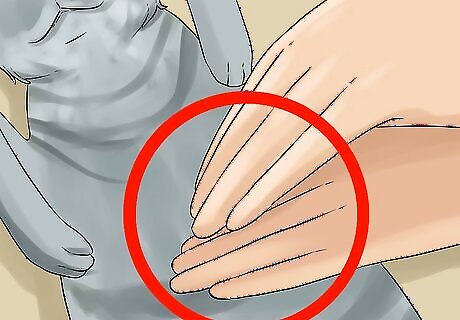
Understand what an abdominal palpation is. To do an abdominal palpation, the veterinarian uses his fingertips to gently feel the cat's abdomen. He or she is checking that the gut, kidneys, bladder, spleen, and liver feel like they are a normal size and shape, and are not painful. Organ enlargement can indicate infection, inflammation, cancer, or a blockage to outflow from that organ. He or she will also feel for any abnormal formations.
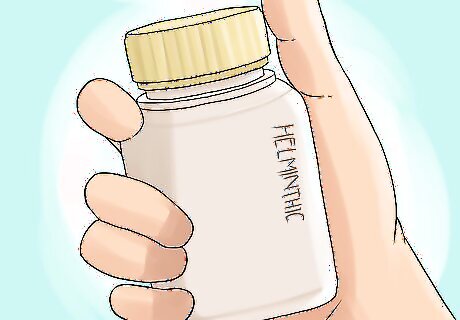
Update your cat’s worming medications if the physical exam does not help you determine what is wrong with your cat. If your cat is not unduly ill, not running a fever, is well hydrated and keeping most of her food down, the vet may suggest getting her up to date with preventative treatments such as worming. A heavy worm burden can cause a physical obstruction in the bowel, or irritate the stomach lining and cause vomiting.
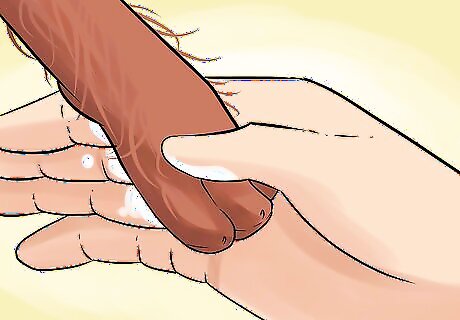
Treat your cat for hairballs. The treatment for hairballs includes a gentle liquid paraffin based laxative that you put on your cat's paw. One such typical product is Lax-a-paste, of which you put about ½ an inch onto the cat's paw twice a day for two to three days. The idea is that this seeps in through your cat's paw and gently lubricates any hairballs that are rattling around in your cat’s stomach and causing inflammation, and helps them to either be passed out in the feces or vomited up.
Seeking Diagnosis Through Lab Tests
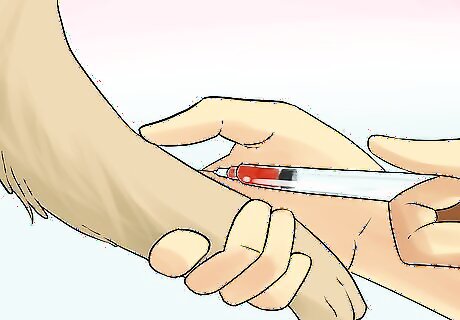
Get a blood test for your cat. Blood tests are run either if no specific reason for the vomiting is found on a physical exam, or to back up suspicions raised on the physical. The panel of blood usually looks at biochemistry and hematology. Biochemistry gives a measure of organ function, such as whether the kidneys are working well. Hematology gives information about the blood cells, such as whether the cat has a raised white cell count (fighting an infection) in which case antibiotic therapy is indicated, or is anemic (the result of some infections and cancer) which should prompt a search for the cause of the anemia.
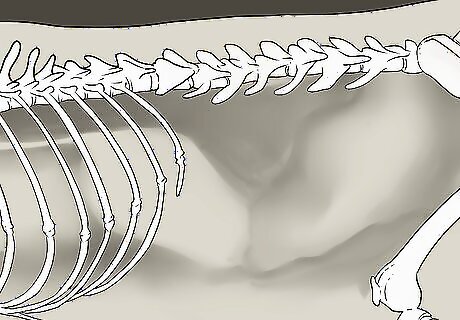
Use radiography to figure out what is going on with your cat. If there is still no explanation for the vomiting then radiography of the abdomen is appropriate. A plain x-ray is taken without the cat being given any contrast agent such as barium. The information gained on plain x-ray is limited because the soft tissue structures of the abdomen are all a similar radiodensity which means the thickness of the stomach wall, or presence of ulcers, is almost impossible to see. However, x-rays are useful when looking for a foreign body (something the cat has swallowed that she shouldn't have) that is causing a blockage. If an obstruction is found then the decision needs to be made about whether it needs surgical removal, or if there is a chance it will pass through of its own accord. Radiographies also can help look for tumors, and check the size of organs.
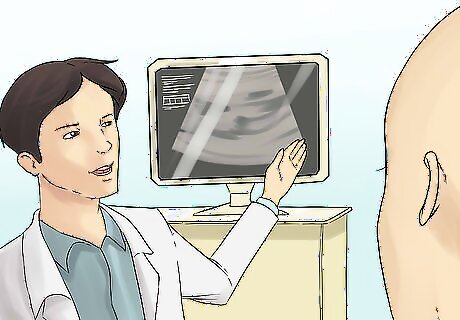
Get an ultrasound of your cat’s digestive system. Ultrasound uses high-frequency waves to produce a grey-scale image of the objects in its path. Ultrasound is particularly useful for vomiting issues because the ultrasound can look into your cat’s stomach for growth and foreign bodies. The pattern of the contractions and movement of fluid within the bowel can also give clues about any blockages that may be causing your cat trouble. With ultrasounds your vet can measure the thickness of the stomach and bowel wall, and look for craters that could indicate an ulcer. Ulcers are usually treatable with oral medications that protect the stomach lining and decrease acid production. It is also possible to see discrete lumps such as may suggest a tumor or cancer.
Seeking a Diagnosis through Treatment
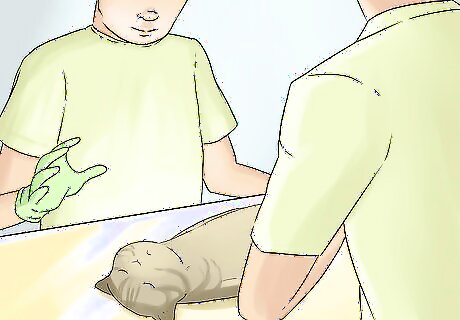
Understand that trial treatment is the next step if no results have been gained from the tests. If all tests to date come back as normal or negative, then the next step is either diagnosis by treatment or biopsy. The latter is discussed in the next section, but if the cat is not seriously ill, you may want to consider trial treatment first, because bowel biopsy does carry a risk of peritonitis and a high complication rate.
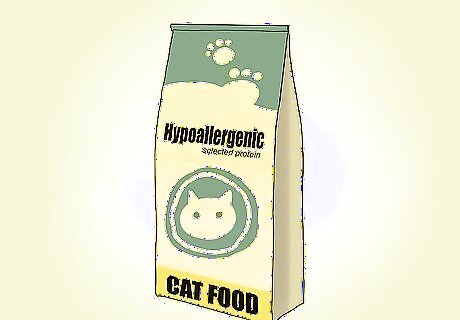
Try feeding your cat a hypoallergenic diet. If the presenting symptom is vomiting, and all tests prove negative or normal, then the veterinarian may suggest putting the cat on a hypoallergenic diet. The reason for this is that sensitivity to a food ingredient can cause inflammation that leads to vomiting. A hypoallergenic diet is a food restricted to one protein source and one carbohydrate or may be a hydrolyzed diet. The latter means that the protein molecules have been broken down so that they are too small to bridge receptors in the bowel wall that trigger allergic reactions.
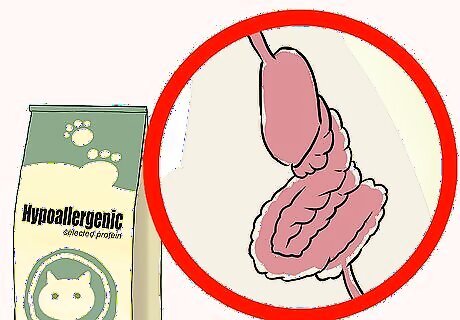
Understand why a hypoallergenic diet might work. The theory behind a hypoallergenic diet is that the bowel gets a chance to settle down because it is not being inflamed by the food. Thus, a chronic vomiter with a food allergy should stop vomiting on a hypoallergenic diet. If however, the vomiting persists, then bowel biopsy may be necessary.
Setting Up a Bowel and Stomach Biopsy
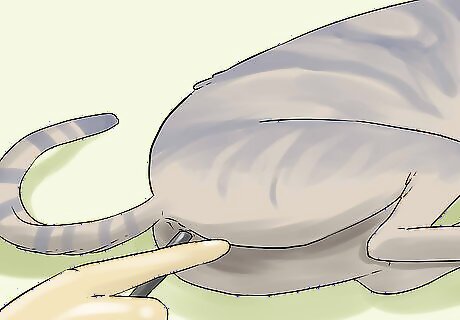
Understand that a definitive diagnosis can often be made through biopsy. A small portion of the bowel is harvested and then examined by a histologist who looks at the cells under a microscope. Samples can be taken by the endoscope, in which case only pinches of tissue from the lining are obtained. Full-thickness bowel wall biopsies can be taken surgically during laparotomy (surgical exploration of the abdomen).
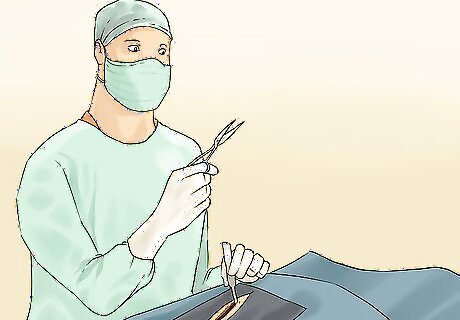
Understand that there is a high complication rate. Full thickness biopsies are associated with a high complication rate. This is nothing to do with the skill of the surgeon, but a reflection of the bowel wall's tendency to swell in response to injury, which can cause sutures to cheese-wire through and loosen, allowing gut contents to leak out into the abdomen.

Take your time discussing your options with your veterinarian. If you are considering bowel biopsies discuss them fully with your veterinarian so that you are aware of all the risks and advantages.




















Comments
0 comment